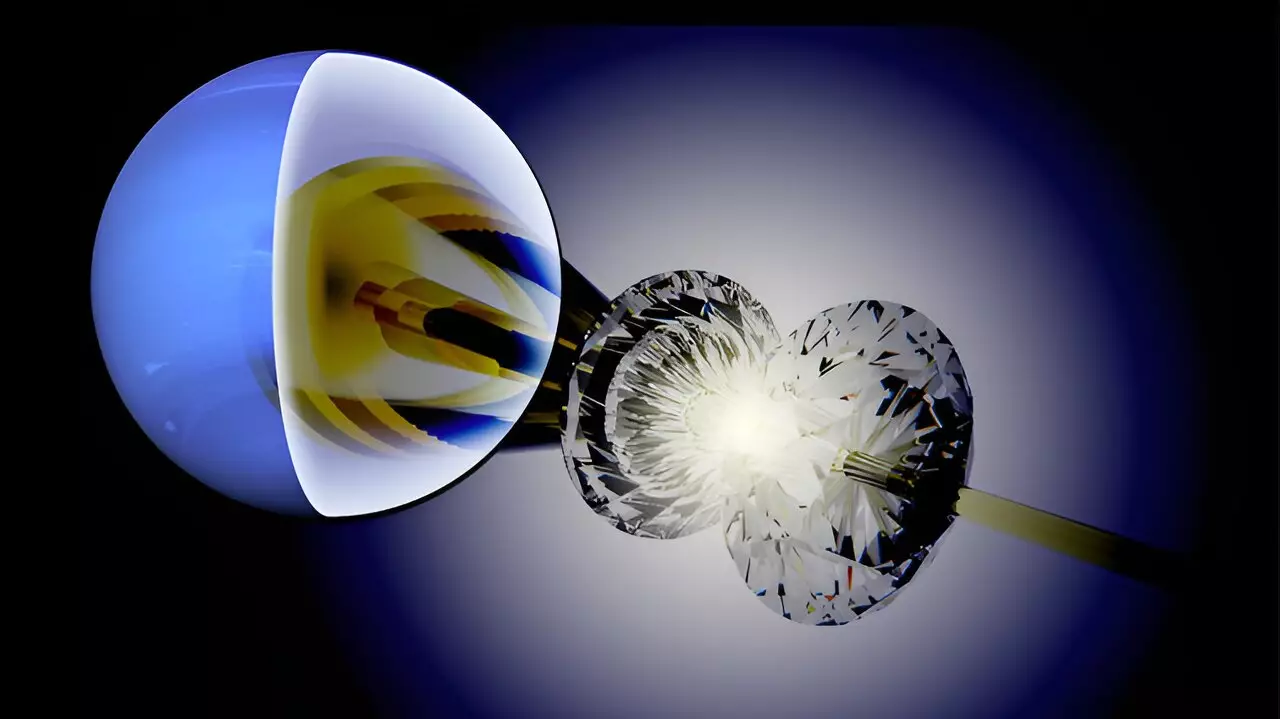A recent paper published in the Journal of Applied Physics highlighted the groundbreaking work of an international team of scientists from Lawrence Livermore National Laboratory (LLNL), Argonne National Laboratory, and Deutsches Elektronen-Synchrotron. The team introduced a new sample configuration that has significantly improved the reliability of equation of state measurements in a pressure regime that was previously unattainable in the diamond anvil cell. This development now allows for high-quality static equation-of-state measurements above 5 million atmospheres, reaching conditions comparable to those found within Neptune’s interior.
The LLNL’s development of the toroidal diamond anvil cell marked a significant milestone in overcoming the static pressure limit in condensed-matter sciences. However, the next critical step involved advancing the sample fabrication process to facilitate more complex experiments. Conducting static compression experiments to pressures exceeding 300 GPa presents significant challenges, particularly due to the less-than-ideal compression environment. The newly introduced sample package addresses this issue by providing an improved compression environment, consequently enhancing the quality of equation of state data obtained from the experiments.
The introduction of the new sample package represents a major advancement in static compression experiments, especially at multi-megabar conditions. This development provides essential complementary data to the results obtained from gas-gun and NIF experiments conducted at LLNL. According to LLNL scientist Claire Zurkowski, who served as the first author of the paper, this innovation allows for the reliable calibration of equation-of-state measurements at pressures exceeding those previously achievable in diamond anvil-cell experiments.
The team utilized the LLNL-designed toroidal diamond anvil cell, capable of reaching pressures above 300 GPa, coupled with a sample chamber approximately 6 µm in diameter – roughly 20 times smaller than the width of a human hair. Within this tiny sample chamber, scientists employed a meticulous 10-step microfabrication process to create the sample package. This process involved embedding the target material in a soft metal capsule, which acts as a pressure-transmitting medium. By ensuring the uniform distribution of stress around the sample material, the soft metal capsule facilitates a reliable equation-of-state measurement, even at a micron scale.
Implications and Future Applications
The experimental work was conducted at Argonne National Laboratory Sector 16 HPCAT and at Deutsches Elektronen-Synchrotron PETRA-III. Although the team tested the methodology on molybdenum using a copper pressure-transmitting medium, the versatility of the sample package allows for broad applicability across various materials. Zurkowski emphasized that this innovative approach represents just the beginning of sample-package microfabrication in the toroidal diamond anvil cell. It is anticipated that this encapsulation method will significantly advance static equation-of-state calibrations across physics, chemistry, and planetary science materials, particularly in the multi-megabar pressure range where data is currently limited.
The collaborative efforts of the international team have opened up new possibilities in static pressure measurements, pushing the boundaries of what was previously thought achievable. The development of the new sample configuration represents a significant step forward in advancing high-pressure science and expanding our understanding of materials at extreme conditions.


Leave a Reply